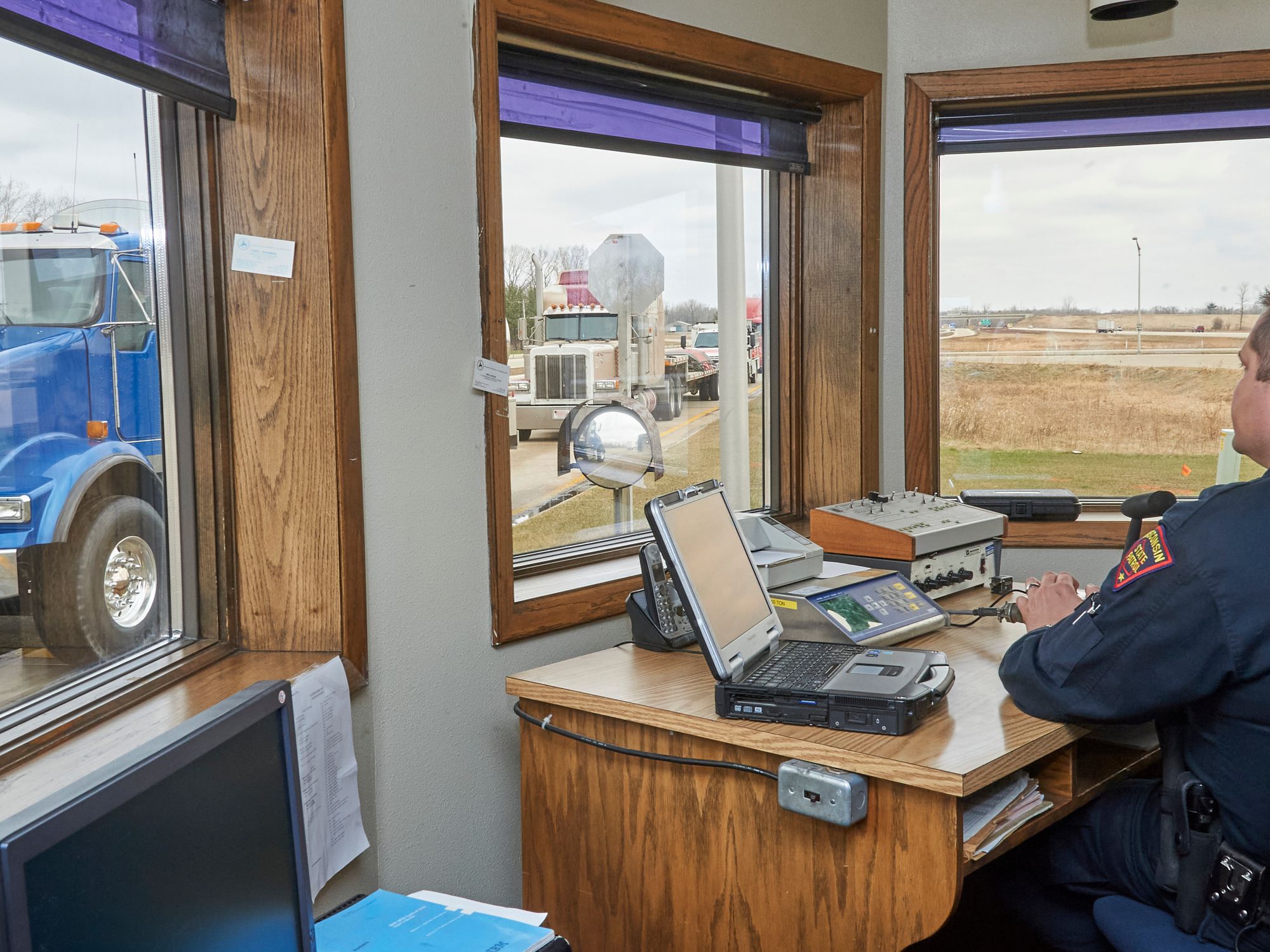What vehicles need to enter scales?

- Deciding whether or not a driver should enter a scale comes down to heeding this adage: “Better to be safe than sorry.”
- Providers of vehicle bypass solutions can lighten the inspection load for carriers and drivers, as well as enforcement personnel.
There is no single answer to determine at what weight or what type of vehicle must enter a scale. The answer varies from state to state, and even from scale to scale within a state. There are, of course, federal size and weight limits for interstate routes, but also separate sets of rules for state and local roads. Enforcement for all types of highways generally falls on the state’s Department of Transportation (DOT) officers.
If a scale is not clearly marked indicating the vehicles that must enter, then to answer the question of “Should the driver pull in?” is that it’s far better to pull in and be waived or green-lighted through than to be chased down.
States have a secondary “line of defense” on the flanks or perimeter so vehicles “taking the scenic route” do not have a free pass to evade enforcement. This secondary effort has multiple assets, but portable scales play a large role. States are required by 23 CFR 675.9 to develop a plan for the maintenance of an effective enforcement process. The plan needs to describe the procedures, resources, and facilities that the state intends to devote to enforcement of its vehicle size and weight laws.
For a plan to be accepted by the Federal Highway Administration (FHWA), the facilities and resources portion of the plan must utilize a combination of two devices to deter the “evasion of size and weight measurement.” Options for a state’s plan include fixed platform scales, portable wheel scales, semiportable or ramp scales, or weigh in motion (WIM) equipment.
WIM systems are used to pre-screen vehicles on the highway or that are entering a fixed scale. The systems can measure axle spacing, determine the weight of each axle, calculate the weight on a series of axles, and provide the gross weight. WIM systems are not used in the United States for direct enforcement as traffic cameras sometimes are. The WIM system identifies vehicles that should be selected for a closer look or brought to a fixed or portable scale.
Since stopping for inspections takes up valuable and finite time, most drivers and carriers would prefer to avoid as many such stops as possible. Drivers and carriers are not alone in preferring to steer clear of unnecessary weighing and inspection of vehicles. Enforcement personnel would also rather concentrate on vehicles that need to be inspected.
Several providers of vehicle bypass solutions can assist in focusing the available inspection bandwidth on likely candidates while allowing others to bypass the scale altogether. They work on similar principles — change the carrier or its vehicle approaching on the horizon from an unknown to a known. Safe carriers tend to operate safely as a matter of culture.
The Federal Motor Carrier Safety Administration (FMCSA) has an Inspection Selection System (ISS) used at roadside inspection stations to help inspectors identify and prioritize carriers for inspections. Carriers with a low score of 1 to 49 receive a “pass” recommendation in the ISS. The bypass systems communicate with the ISS to let inspectors know that the carrier for the vehicle approaching has a low ISS score.
Systems may send additional information to help the enforcement system make the right decision. There are circumstances, such as traveling under an oversize or overweight permit, that the driver would still need to pull in even if a system indicates the vehicle may be able to bypass the scale.
Also see the state limit topics for additional information regarding scale locations and vehicles that are required to enter.
